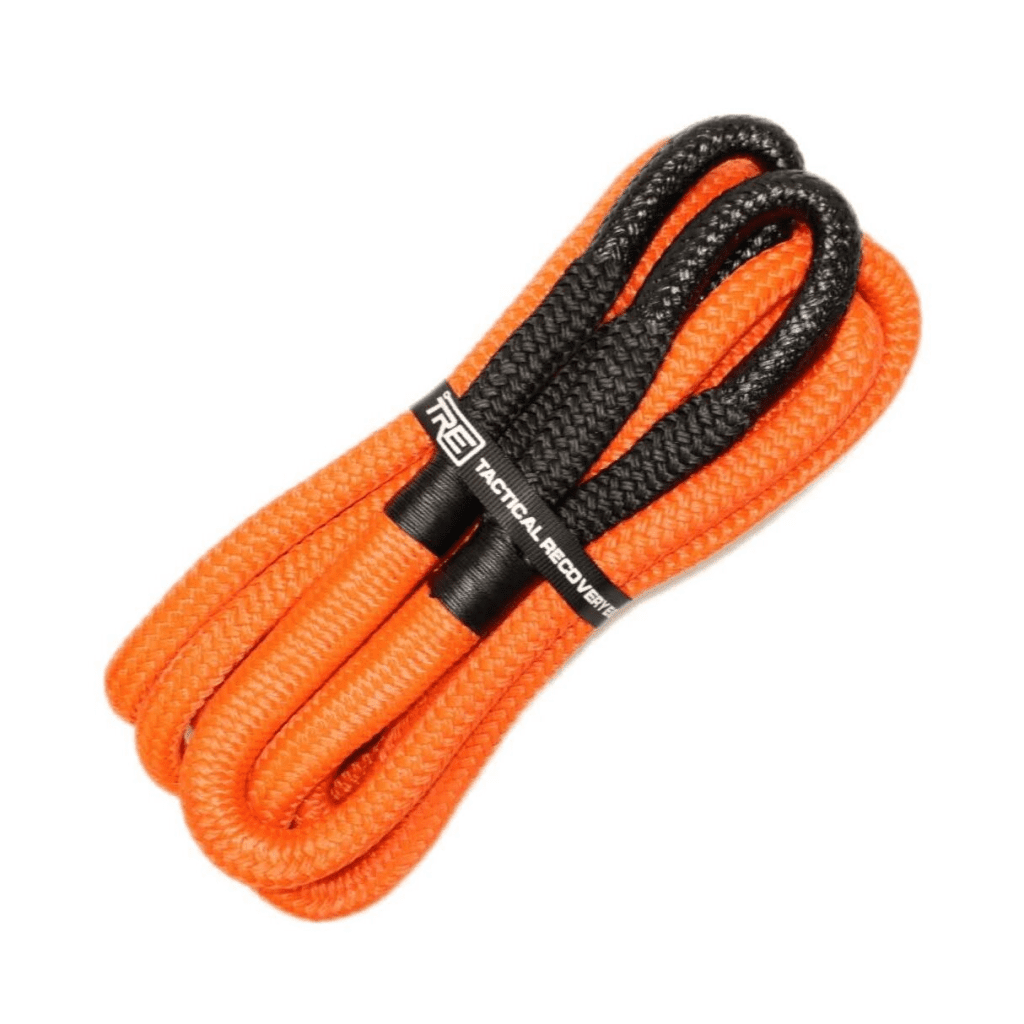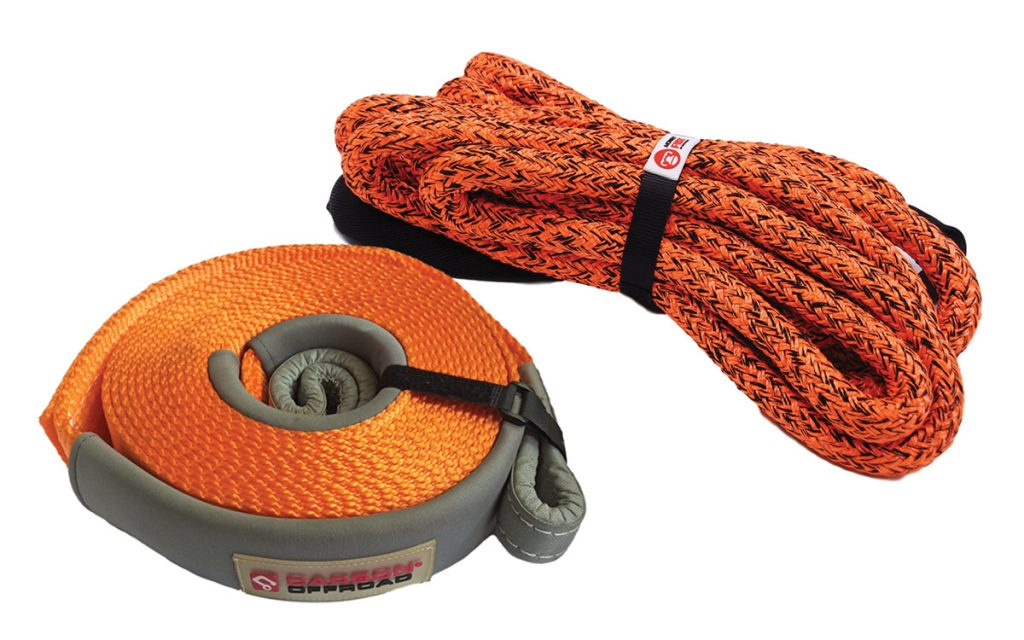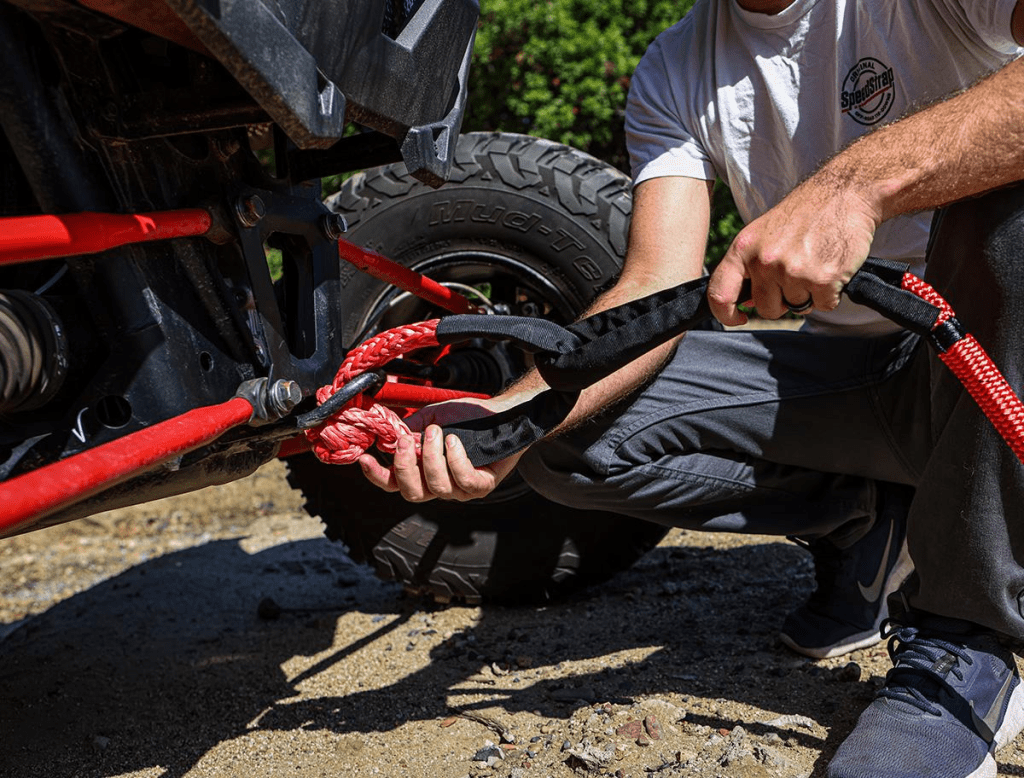The kinetic rope is the most significant device to save motor vehicles from disaster and safely move them. While each rope has its own set of unique qualities, several characteristics differentiate them from others. It’s critical to evaluate seven key aspects including breaking strength, stretch percentage, and others when picking up the appropriate kinetic rope for your purpose. This post will be about the three things you need to learn about the kinetic rope to make decisions with the information you have in the field.
What Is A Kinetic Rope?
A kinetic rope is a particular recovery rope made of double-braided nylon that can stretch up to 30 % and thus can absorb and transfer kinetic energy from the recovery trucks to a stuck vehicle. Contrary to the rigidness of static straps or chains, the stretching ability of kinetic ropes makes the recovery smoother and safer by sending the pulling force slowly, therefore, avoiding jerks and overloads which are the main causes of damage or injury.

These ropes which are called kinetic ropes are intended to be used to take advantage of the momentum of the recovery truck so that the incident vehicle is dislodged without applying large forces. The nylon build with an outer covering and the inner elastic core offers the controlled elongation and energy transfer process in a recovery phase.
What Size Kinetic Rope Do I Need?
To determine the appropriate size kinetic rope for your vehicle recovery needs, there are several key factors to consider:

Gross Vehicle Weight
You must first determine the actual weight of the vehicle you want to pull from the ditch. This would be the gross vehicle weight which consists of the total weight of the vehicle (car plus any additional loading, passengers, equipment and accessories). Correctly determining the GVW is important since it directly influences the needed rope strength and size for kinetic ropes.
Minimum Breaking Strength
The kinetic rope should be sized in a way that the MBS of this vehicle is approximately 3 times higher than the GVW of the vehicle being towed. This is the margin of safety which is used to cover additional loads (shock loads) and abrasion that reduce the rope’s strength over time. As an example, if your vehicle’s GVW is 6,000 lbs, you will need a kinetic rope that has an MBS of at least 18,000 lbs (6,000 lbs x 3).
Rope Diameter and Length
Kinetic ropes’ diameter usually ranges from 1/2 inch to 1-1/4 inch and lengths are from 20 to 30 feet. For example, bigger diameter lines experience higher MBS ratings but are also more difficult to manage because they are heavier and less flexible. Longer ropes are preferable as they offer more stretch and energy absorption for the recovery stage, but this may be associated with inconvenience in their management.
Recovery Vehicle Capability
Don’t forget the recovery vehicle capabilities. If you choose to use a smaller vehicle to recover the bigger one, then the MBS rope will be more suitable if it is higher to make up for the difference in size and ensure a safe recovery. The recovery vehicle should be able to produce sufficient power and grip on the road to ensure that the movement of the load does not affect its stability or control.
Terrain and Recovery Conditions
The landscape and recovery conditions could also define the range of the size of the kinetic rope. If you expect to recover vehicles from a harsh environment, for example, with steep inclines, mud, or loose surfaces, you can try a larger diameter rope of a higher MBS that has a good ability to deal with the increased loads and shock loads.
Safety Factor
It’s advisable to select a rope that has an MBS greater than the calculated value by approximately 2 to 3 times the safety factor. This safety margin is an extra feature to prevent sudden shock loads, abrasion, and other factors that may decrease the rope strength over time. Hence, it contributes to the reliability and security of the operation.
By carefully considering the GVW of the stuck vehicle, the recovery vehicle’s capability, the terrain and recovery conditions, and an appropriate safety factor, you can select a kinetic rope size that will provide a safe, effective, and reliable recovery solution. Choosing a slightly larger rope is always better than using an undersized one, which could cause failures and dangerous situations.
How To Use A Kinetic Recovery Rope?

To effectively use a kinetic recovery rope, follow these steps:
1. Connect one end of the kinetic recovery rope to the stuck vehicle’s recovery point employing a correctly rated shackle or hook.
2. The kinetic recovery rope should be attached to the stuck vehicle’s recovery point with a properly rated shackle or hook.
3. Tie the other end of the rope to the anchor point of the recovery vehicle just like what you have done on the first side.
4. Ensure bystanders are at a safe distance and all parties involved understand the recovery process.
5. With both vehicles in neutral or park, the driver of the recovery vehicle gently accelerates, creating tension in the rope.
6. Once tension is established, the driver of the stuck vehicle engages the engine and gently applies the throttle to assist in the recovery.
7. Communicate between drivers to coordinate the pull and ensure safety throughout the process.
8. After successful recovery, carefully detach the rope from both vehicles and stow it properly for future use.
Conclusion
In conclusion, selecting the correct size of kinetic rope and adhering to proper usage procedures are crucial for safe vehicle recoveries. Consider the vehicle’s total weight, the rope’s strength, terrain conditions, and features when making your purchase. Choosing the right size rope and using it safely ensures effective recovery while minimizing risks. As a source of industrial solutions, Thispower Company is here to provide the best kinetic ropes that are suited to your special needs. Call us now to discuss how we can improve your operations by providing top-of-the-line kinetic ropes.
